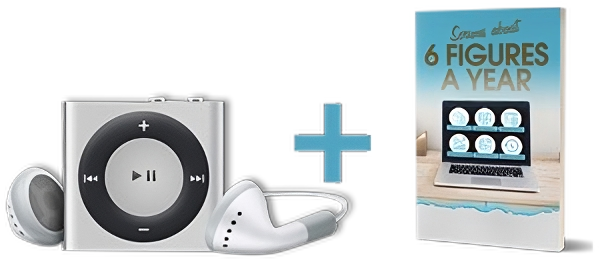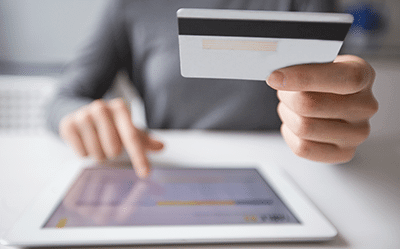Master Up Selling and Cross Selling to Increase Sales
When you’re building your sales funnel, don’t forget to include an upsell or cross sell or two.
An upsell is simply an option to buy a bigger, better version of what you’re selling. For example, you might offer two versions of software, one of which does more than the other.
Or you could offer to add on personal coaching to the product they just purchased, making it easier for them to use that product.
Cross selling is offering something that is related to the first product. For example, if you just sold them a course on driving traffic, you might cross sell them a course to increase conversions from that traffic.
The lines between cross selling and upselling can become blurred. The coaching example above, for example, could almost be considered cross selling, too.
The important thing to remember is that when you’ve made a sale, you don’t have to stop there. The customer is already in a buying mood, so why not make an additional offer or two?
This allows you to increase your income and your options. If you are using affiliates, you might offer the affiliates a higher percentage of the initial sales, since you’ll be able to make money yourself on the upsell.
For example, if you’re selling a $30 product without upsells, you’ll likely want to split the $30 with your affiliates.
But if you have a strong upsell of $100, you might consider giving affiliates a much higher percentage of the $30 sales and splitting the upsell with them 50/50. This encourages them to promote harder, since they are making more money.
Still not convinced you want to add upsells and cross sells to your funnel?
In Marketing Metrics, the authors say,
“The probability of selling to a new prospect is 5-20%. The probability of selling to an existing customer is 60-70%.”
Since product recommendations drive 10 to 30% of revenue on average, putting the right upsell offer in front of people at the right time is key to sales.
And in the kind of simple, straightforward marketing funnels we use in the information and software businesses, I’d have to estimate that the 30% figure is actually quite low.
How can you make your upsells (and cross sells) effective? Here are 12 tips:
- Choose the RIGHT Upsell
You’ve got many possibilities to choose from. For example:
The Version Upgrade – Ask customers to get a different version of a product you’re offering. It can be bigger, stronger, faster, better – you get the idea.
Product Help – This could be coaching, videos, or some kind of assistance to make sure the customer is able to effectively use the product.
Done for You Service – Offer to install the software for them or do something else that they likely don’t want to do themselves.
Resell Rights – If applicable, offer to sell them resell rights. They can then resell the product themselves, according to the terms you dictate.
A Better Deal – Let’s say you’re selling a monthly membership – offer them a sweet deal of they pay for the next year in advance.
Bundle – If you package related items together and show that it’s a better value, you can increase your sales.
- Always Offer the Upsell
Of course you’re going to add your upsell to your sales funnel. But the more upsell opportunities you show customers, the more chances they have to take one.
Offer your upsell everywhere it makes sense. Some typical locations for upsells include:
On product pages, where you have multiple chances to show off product versions.
When people add items to the cart, as it’s a great time to show supplementary products or services that help them get more value from what they’re already planning to buy
When the customer reaches a success milestone. For example, when they’ve been on your list for a certain amount of time, let them know and offer them a premium version of your newsletter or a product bundle.
When a customer emails you with a question. Answer their question, then add a P.S. about the special (secret) deal you’ve got with the better options than the standard version (or whatever… you get the idea.)
Always be upselling.
- … But Don’t Be Pushy
We’ve all seen people get upset on the Warrior Forum about upsells. You’ve got to walk a fine line between upselling (which you absolutely SHOULD do, regardless of a few complainers) and upselling TOO MUCH.
Have you purchased a product and then discovered there were TWELVE upsells? I have. By the end, I was so frustrated, I wanted to throw my computer.
Then again, I’ve purchased a product, landed on the upsell page, and become super excited by the offer which I IMMEDIATELY purchased.
Offer the right upsells, in the right amount.
It’s like Goldilocks and the Three Bears: Too much is… well… too much, and you’ll burn your relationship with your customers.
Not enough is robbing you of profits and leaving you in the cold.
And ‘just right’ is perfect.
- Make Your Upsell Relevant
Relevance is key when deciding on your upsell.
If someone’s buying a book on marketing, there’s no point in recommending a book on automobile repair, even if most of your customers drive a car.
Instead, you’ll recommend something else related to what they’re looking at, like an audio version of the book or another book by the same author.
When you’re upselling, you’ll have to sell the benefits of the upsell and show why it’s important. For example, the customer will get more, better, easier or faster results, perhaps with less effort and frustration.
- Personalize Your Upsell Recommendations
Don’t use the same upsell for every product. Tailor the upsell to the initial product sale, so that it just makes sense.
The exception: Let’s say you’re in the IM niche, and you have a membership site of your own that covers all things IM. You could offer your membership as an upsell to any IM product by tailoring your offer to highlight how your membership will enhance the product benefits.
For example, if you’re selling a product on traffic generation, your membership upsell would highlight the aspects of your membership related to traffic generation, followed by the other benefits of your membership.
- Get the Language Right
Using the right words is always an important part of all successful marketing. But it’s even more important when persuading your customers to buy the upsell.
Get your customers to imagine how they will use the upgrade. Or trigger their fear of missing out (FOMO). If you can paint a vivid picture of the benefits of the upsell coupled with the fear of losing these benefits, you’ll make the sale.
- Use Urgency
A countdown timer can be effective for creating a sense of urgency. Have a reason for the timer- perhaps your upsell is limited, and if they don’t grab it, you have to offer it to others.
Or if it’s your style, be direct. You’re making them an incredible offer, but the catch is they must grab it quick before it’s too late.
- Offer Free Shipping
If you’re mailing products rather than delivering them electronically, then free shipping is a marvelous way to boost sales. Around 90% of customers say free shipping is their main incentive to shop more online.
Set an dollar amount people have to reach to get free shipping. Then as they add things to the cart, remind them of how much more they must spend to qualify for free shipping.
That’s a big incentive to continue adding items to the cart, especially if they’re not too costly.
- Provide Social Proof
Just as with any product you’re promoting, be sure to add social proof to let customers know that people find your upsell to be valuable and deliver results.
- Limit the Price Increase
If your initial offer is $20, a $200 upsell is simply too much by comparison. And people will compare.
Time and again I see upsells for crazy high prices compared to the initial offer. These tend to annoy customers, since they feel they’re being taken advantage of while being held captive in the process of trying to access their product.
You might test to see what happens if you offer an upsell that’s actually cheaper than the initial product. For example, if your product costs $47, try selling a $27 upsell to go with it.
If it’s the right upsell and positioned properly, I suspect you’ll make a ton of sales.
- Use the Rule of Three
You’ll often hear marketers talk about the “rule of three”. It’s to do with the fact that people respond to patterns, and three seems to be a magic number.
For upsells in a marketing funnel, we’re going to use the rule of three for the upsells. You’ll want to test this, of course. But try offering three upsells of three different prices. Offer the highest price upsell first, followed by the second highest, and finally the lowest price upsell.
The psychology of numbers shows us that if you show a larger number to a person first, then any number that follows and is lower seems smaller than if you showed that number by itself.
For example, if I tell you something costs $49, it’s going to seem like a higher price than if I first mention $100, followed by $49.
Your first upsell might be $99, your second might be $47, and your final offer might be $27, making the $47 seem low and the $27 seem like a bargain.
As a side note here: When you’re about to reveal your price in a sales letter, first use higher numbers, even if it has NOTHING to do with price.
For example: “538 people have left positive reviews for ABC product, with 491 of them giving it the absolute highest rating. And yet, it still only costs $27.”
And never do the opposite. For example, never say, “4 out of 5 people love our product. In fact, 1 person even said she loves our product more than her husband of 3 years. And yet, it still only costs $27.”
- Follow Up via Email
They didn’t take the upsell(s)? Follow up with email and give them a limited time to grab it.
Some people will be very much on the fence about whether or not to grab your upsell. By giving them a second and third chance, you will make more sales. Just be clear that this offer is only available for a very short time, such as 72 hours.
Side Note: When giving your customers a limited time offer, phrase it in hours, not days. For example, “72 hours” sounds much more urgent than “3 days.”
Claim Your Free MP3 And PDF Training: The 3-Part Plan To Topping $100,000 Per Year In Profit
Enter your name and email address below to receive a new lesson delivered to your inbox once a week. Your first lesson will be delivered immediately.

Privacy Policy : We value your privacy. You can unsubscribe from receiving future emails with 1 click at any time.

















